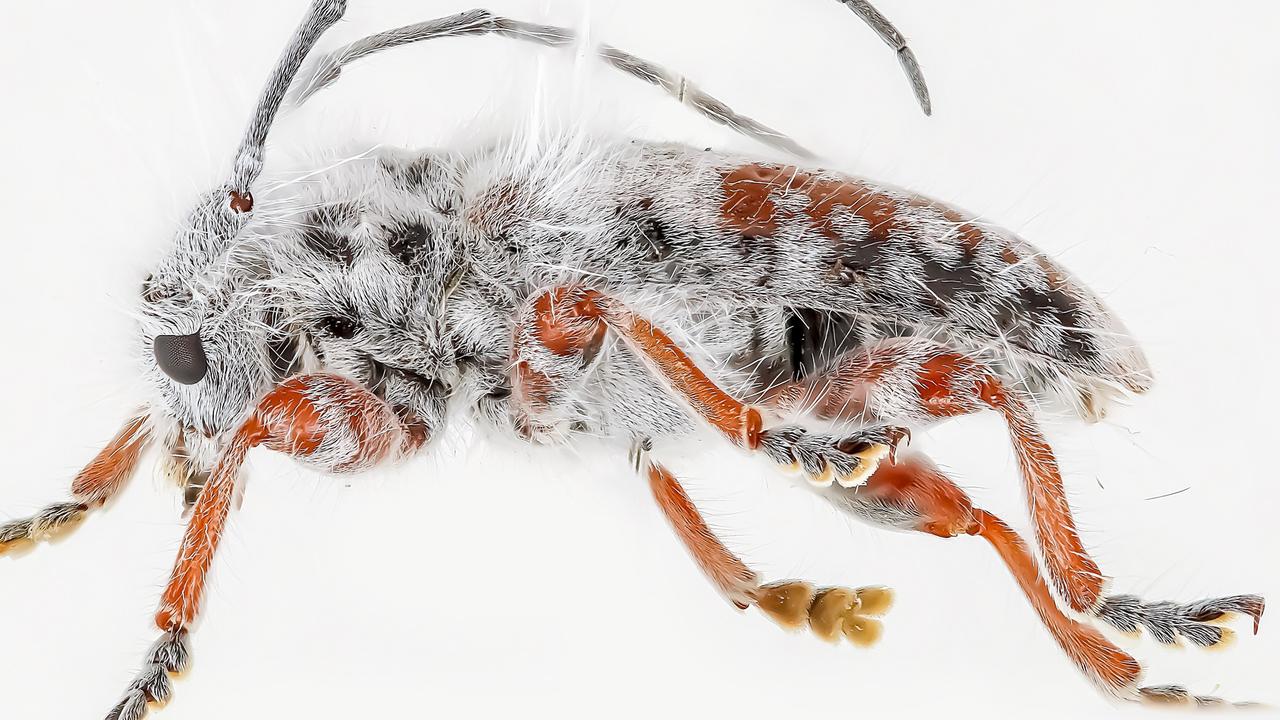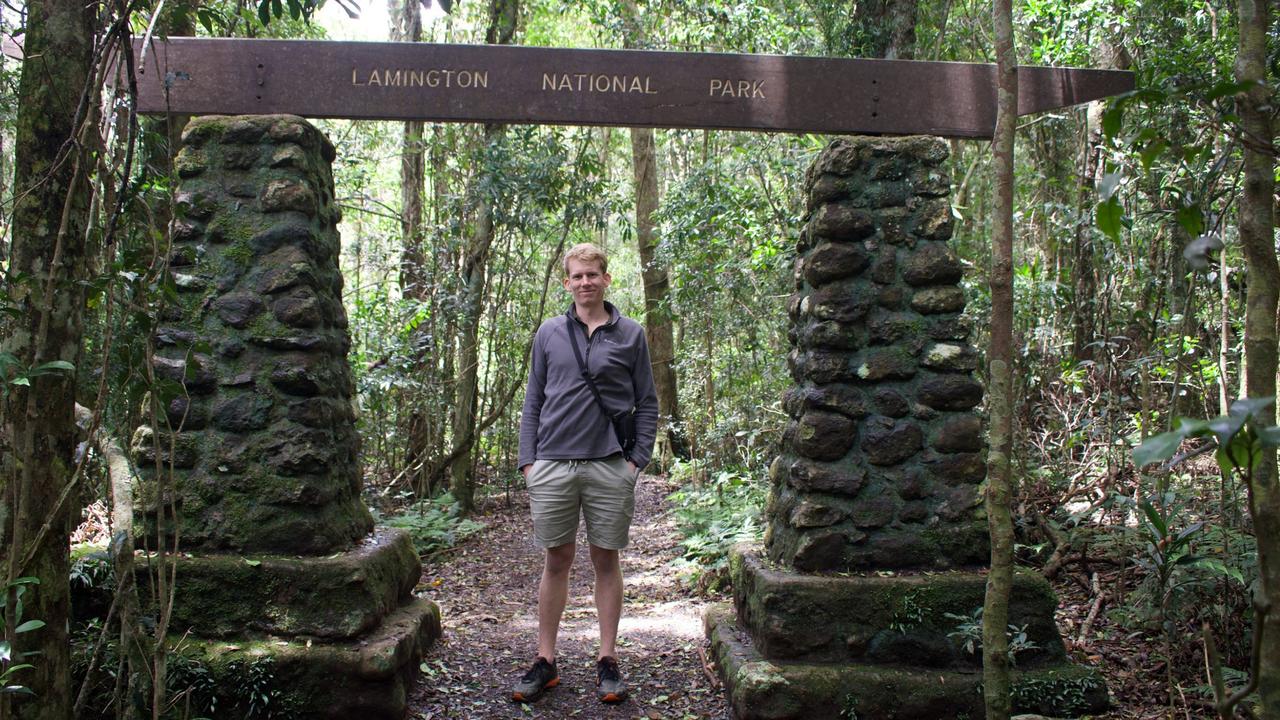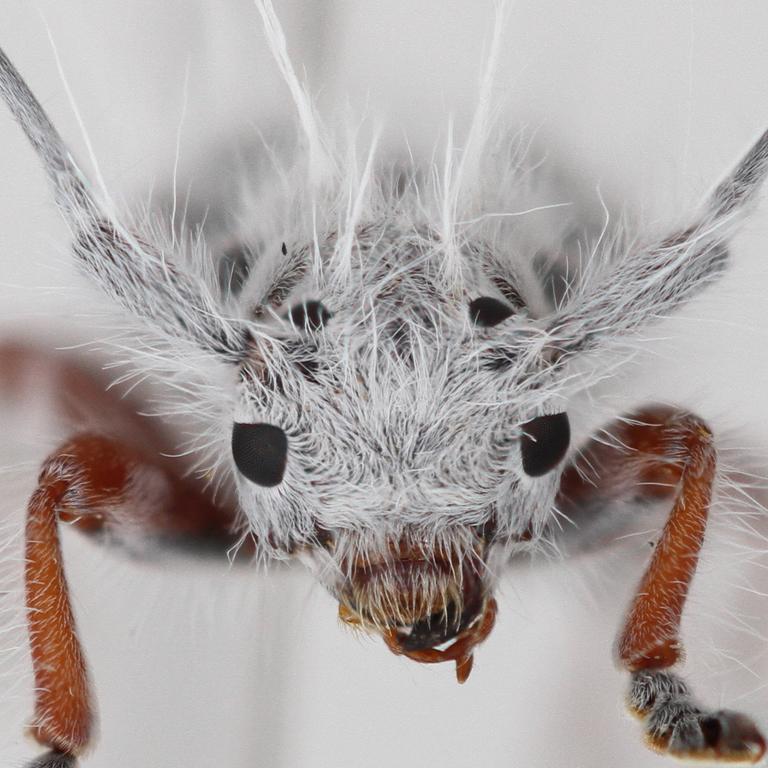Scientists unveil unique ‘fluffy’ new discovery made in Gold Coast hinterland
A man camping first thought he was looking at bird poop – but it turned out to be a world-first discovery

READING LEVEL: GREEN
A completely new species* of beetle has been discovered by accident in the Gold Coast hinterland*.
University of Queensland researcher James Tweed said he stumbled across the fluffy critter* while camping in the rainforests of Binna Burra.
“I was walking through the campsite at Binna Burra Lodge one morning and something on a Lomandra leaf* caught my eye,” Mr Tweed said.
“And initially I thought it was bird droppings but a little voice in the back of my mind said maybe I should take another look. And to my amazement, I saw the most extraordinary and fluffiest longhorn beetle* I had ever seen.”
“Not exactly what I was expecting to see on my morning walk to brush my teeth.”

The beetle measures 9.7 millimetres* with striking red and black colouration* – and more uniquely – is covered with long, white, fluffy hairs.
“I’m originally from New Zealand but I also study Australian beetles, so at first I took a couple of photos thinking maybe this is just a really rare beetle I hadn’t come across in my research,” Mr Tweed added.
But it wasn’t until Mr Tweed visited ANIC* to compare his discovery to their extensive collection that he realised the beetle wasn’t only a new species – but a completely new genus* of Australian longhorn beetle.

“I contacted Adam Slipinski – he literally wrote the book on beetles. He’s written three extensive books on the Australian longhorn beetle so he would have examined thousands of them and even he said he had never come across this species.”
Mr Tweed said following his discover, the team of entomologists decided to name the beetle Excastra for the genus, which is Latin for "from the camp", and species albopilosa which translates to "white and hairy".
Since his discovery in December 2021, Mr Tweed said he had revisited Binna Burra on multiple occasion in an attempt to find more specimens with no luck.

With his initial discovery the only specimen so far, research into the beetle has been slow-going.
“The long white hairs are quite unique, we’ve never seen that characteristic in any other Australian longhorn beetle so the question is what is their function?,” Mr Tweed said.
“So far we think it’s there to make the beetle look like it’s been infected with a parasitic* fungus* to deter predators like birds. But it could also be for temperature regulation*, or for camouflage* – we just don’t know.”

Mr Tweed said the most “puzzling” aspect of his discovery is how the beetle managed to remain undiscovered for so long.
“Binna Burra has been popular with entomologists* for more than 100 years so it’s puzzling* that it hasn’t been found until now,” he said.
“So who knows what else is out there just waiting to be discovered.”
GLOSSARY
- species: a group of organisms that can interbreed and produce fertile offspring
- hinterland: the remote and less developed parts of a region
- critter: a creature or animal
- Lomandra leaf: a type of plant leaf found throughout eastern Australia
- longhorn beetle: any of about 25,000 species of beetles whose name is derived from the extremely long antennae of most species
- millimetres: a unit of length equal to one thousandth of a metre
- colouration: the colour pattern or markings of an animal or plant
- ANIC: Australian National Insect Collection
- genus: a category in the classification of organisms, ranking below family and above species
- entomologists: scientists who study insects
- parasitic: an organism that lives in or on another organism and benefits at the host’s expense
- fungus: a group of spore-producing organisms feeding on organic matter
- temperature regulation: the process by which an organism maintains its internal temperature within a certain range
- camouflage: the use of colouration or patterns to blend in with the surroundings
- entomologist: a scientist who studies insects
- puzzling: confusing or difficult to understand
EXTRA READING
Lessons from a beetle’s almost unbreakable shell
New type of ancient human discovered
Incredible new pterosaur discovery
QUICK QUIZ
- Where did James Tweed discover the new species of beetle?
- What caught James Tweed’s eye while he was camping in the rainforest?
- What is unique about the appearance of the newly discovered beetle?
- Why did James Tweed contact Adam Slipinski after discovering the beetle?
- What is the significance of the name 'Excastra albopilosa' for the newly discovered beetle species?
LISTEN TO THIS STORY
CLASSROOM ACTIVITIES
1. What did you see?
A little voice in the back of my mind said maybe I should take another look, and to my amazement, I saw the most extraordinary …
Write a story that starts with these words.
Time: allow at least 20 minutes to complete this activity
Curriculum Links: English
2. Extension
Why do you think the beetle took so long to be discovered? Brainstorm as many reasons as you can
Time: allow at least 15 minutes to complete this activity
Curriculum Links: English, Science
VCOP ACTIVITY
Stretch your sentence
Find a “who” in the story – a person or an animal.
Add three adjectives to describe them better.
Now add a verb to your list. What are they doing?
Add an adverb about how they are doing the action.
Using all the words listed, create one descriptive sentence.

